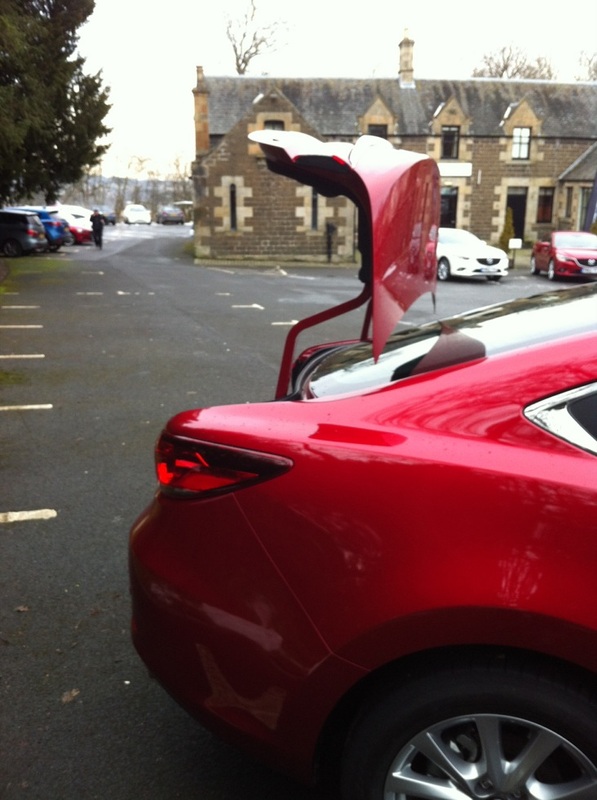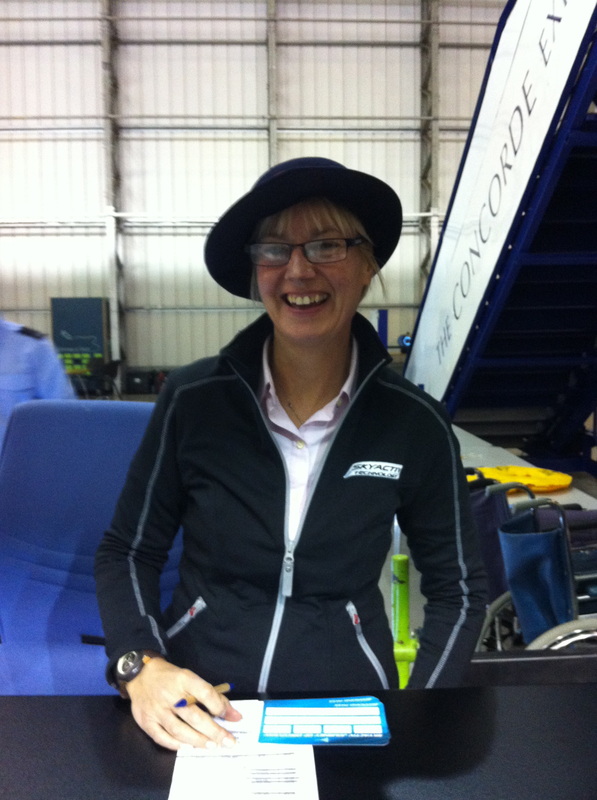Some numbers
Prices (on the road)
Petrol saloons 2.0 145PS from £19,595 2.0 165PS from £23,515 Petrol wagons 2.0 145PS Tourer SE-L from £21,265 2.0 165PS Tourer Sport from £24,265 Diesel saloons 2.2 150 PS from £21,795 2.1 175 PS from £25,495 Diesel wagons 2.2 150 PS from £22,545 2.2 175 PS Tourer Sport from £26,245 Performance Petrol saloons 2.0 145 PS manual 0-62mph 9.5sec, max speed 129mph, 51.4mpg combined 2.0 165 PS manual 0-62mph 9.1sec; max speed 134mph; 47.9mpg combined Diesel saloons 2.2 150 PS manual 0-62mph 9.0sec, max speed 131mph, 67.3mpg combined 2.2 175 PS manual 0-62mph 7.9sec, max speed 139mph, 62.8mpg combined For more details see www.mazda.co.uk |
SKYACTIV: Mazda6
It was very strange sitting in the latest Mazda6. Richard and I only recently sold our 2005 2.0 TS diesel, and everything was in the same place and looked much the same, just newer, plusher and somehow plumper.
I liked our Mazda a lot and only sold it because the mileage was getting scary at 123,000 miles. It was comfortable and sturdy, and we used the huge loading capacity several times transporting Expedits and Billys from IKEA. Once fuel prices shot up to liquid caviar level, I drove it as if I had a crate of eggs in the back (or perhaps champagne glasses, being a motoring journalist). It was smooth and comfortable, but we only ever returned mid-40s mpg on average. I think it was the devil on my shoulder who used to make me deliberately late to set off to collect my husband from the station. I’d be forced to put my foot down, and I could almost hear the Six whispering “Ooh goody, are we going to have some fun now”. Then it was a different car, nimbly zig-zagging down our country lanes, surging out of corners and on to the straight. As we weren’t paying for the fuel on the press drive in Scotland and we were on some lovely roads, driving was fun again. We had to be cautious, looking out for snow and ice, and I felt the anti-lock brakes, and probably a host of other electronic stability systems, came on a couple of times as I had to brake at icy junctions. Never mind, it was still lots of fun, zippy and agile. The downside is quite a firm ride, and I felt a few solid kerbumfs as we drove over rough Tarmac. As with my car, you can’t be a lazy driver in the diesel models. They’re punchy, but you need to change gear frequently to keep the revs up, even in the 175 PS. Luckily the gearchange is smooth and satisfying. I like the steering, too. It lets you know what the wheels are up to so you feel in control. I drove the 2.0 160 petrol version on dry roads heading back to the airport, and liked that one best. It felt lightly and more sprightly, but this one will lose out because of the company car tax structure and everyone’s wish to save fuel. Even if the mpg is OK for you, there’s a risk it may not hold its value so well. (At the moment more than 70% are sold to fleet buyers, but Mazda reckons 35% of the new model will be private buyers). Saloon or estate only I had a real surprise when I went to look in the load area. There’s no hatchback model, just a saloon or estate (Mazda is calling it a wagon, US-style). Admittedly the boot is huge, and grows even bigger when you fold the rear seats. I could probably still get an Expedit or Billy in it, but would probably struggle with an actual piece of furniture. There are a couple of practical reasons for losing the hatch. The UK is just one of a few peculiar countries, including Australia, who like hatchbacks. Everyone else, including the vital US market reckons they’re low-rent and prefers a boot. Also, families needing to shift lots of stuff tend to prefer SUVs and crossovers these days. Managing Director of Mazda Motors UK, Jeremy Thomson told me: “We’d sell hatchbacks if we had them, but we have so many segments in this comparatively small market:petrol and diesel, saloon and estate, Sat-Nav models, it doesn’t make sense to offer a hatch as well.” Mazda would like to shift itself up into the premium market, and if BMWs, Audis and the like don’t offer a hatch, neither will Mazda. Their research (using, I suspect a rather loaded question) showed that most people didn’t buy their Mazda6 because it was a hatchback, saying styling was more important. The six doesn’t have the quality feel of the German executive brands yet, but I can imagine it would justify a smirk at a neighbor with a Ford or Vauxhall. Its price reflects that, of course. It’s not Tesco, nor quite Waitrose – it’s Sainsbury’s. Styling The styling of the new car is very close to the Shinori concept of 2010, but I’m not keen on it. It's more sporty than before, and it's certainly not ugly, but the two sweeps along the body are fussy and (in my opinion) more Japanese-looking than the previous model. Inside, the dash seemed too high and somehow swollen. I prefer the understated look of my old car. Economy and safety Naturally Mazda is as worried about keeping fuel costs down as its customers, and is applying its SkyActive approach of working on every part of the car to reduce weight and improve efficiency. (It’s interesting that its half-brother Ford doesn’t seem to be sharing this technology.) Fuel consumption and CO2 emissions are both down. One very smart feature, offered as standard on most models, is the i-ELOOP. To reduce the amount of fuel required to run all the electrical parts of the car, this system harvests energy when you decelerate to use instead. It can boost economy by 10%, depending on driving conditions. Mazda has also added lots of safety kit to reduce insurance costs, including blind-spot radar and Smart City brake support to prevent crawling traffic bumps. Verdict: I would definitely be happy to own one of these again, but I think I'd miss the hatch. |
Not Sky-active: Concorde
Active 1969 to 2003
Top speed 1,300mph (Mach 2) London to New York 3 hours Glasses of champagne served 1m We stopped off on the drive to visit Concorde at the National Museum of Flight I used to feel and hear her going over regularly while working at Autocar and then What Car? in Teddington, but sadly never got to fly in her. |
- Welcome
- Woman Driver Blog
-
Top stories
- Mario Andretti interview
- WOMAC 2017
- Getting connected in Melbourne
- Fitting a baby seat
- Haggling Academy
- Men vs Women - the stats
- First Mustang owner was a gal
- Emma Peel vs Alice Morgan >
- Western Group Driving Day
- Transport for four babies
- Women lose advantage
- Sam flies high
- Jo Price beats the boys
- They bought any car Dot Com
- Fast women
- E-types on film
- In which I bought a car
-
Car Reviews
- Mercedes B-Class
- VW Golf SV GT 2014
- Renault Twingo 2014
- Audi A3 Cabriolet
- Jaguar F-type
- Fiat 500 Goes Large
- Putting Paceman through its paces
- Mazda6 and Concorde
- Jaguar Land Rover Experience Day
- VW up! - city car in the country
- Joining the MX-5 Club
- VW Driving Day
- Face-lifted MX-5
- Review: VW Golf 2013
- SMMT Test Day 2012
- Portfolio
-
Galleries
- My cars >
- All-New Discovery at Gaydon
- Silverstone Classic 2016 >
- Hot rods at Pendine 2016
- Hot rod heaven 2013
- Classic Motor Show 2014
- Goodwood Revival 2014
- Beaulieu autojumble 2014
- My favourite hotels
- Bonhams Auction Goodwood 2014
- Women in motoring history
- Riding with BTCC Champ
- Pink c'est chic!
- Bond girls' cars
- Women in Car Advertising
- The woman driver onscreen
- Disney without kids
- Sweeney!
- Geneva Show 2013 Gallery
- Goodwood Revival 2012
- Contact
- Jaguar I-PACE launch











